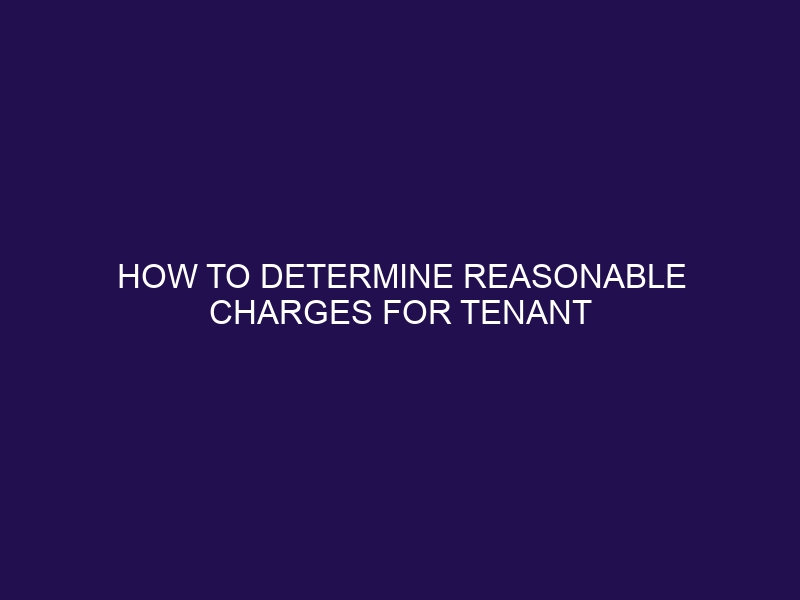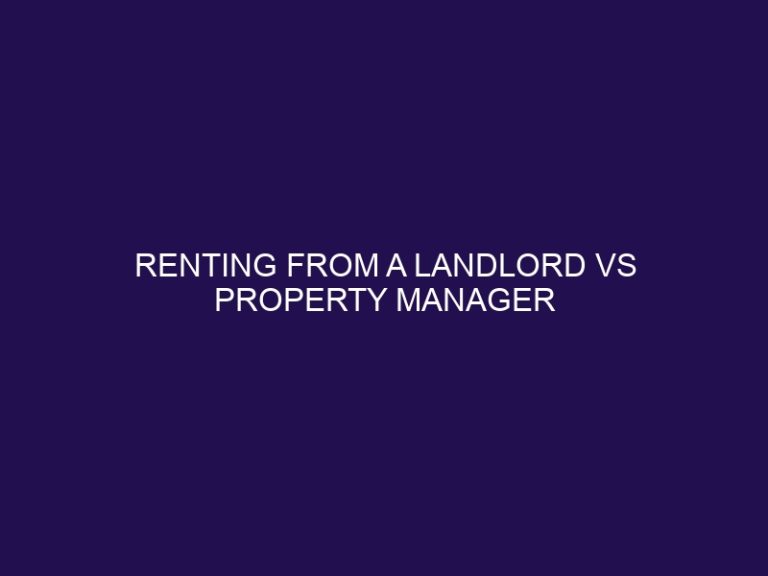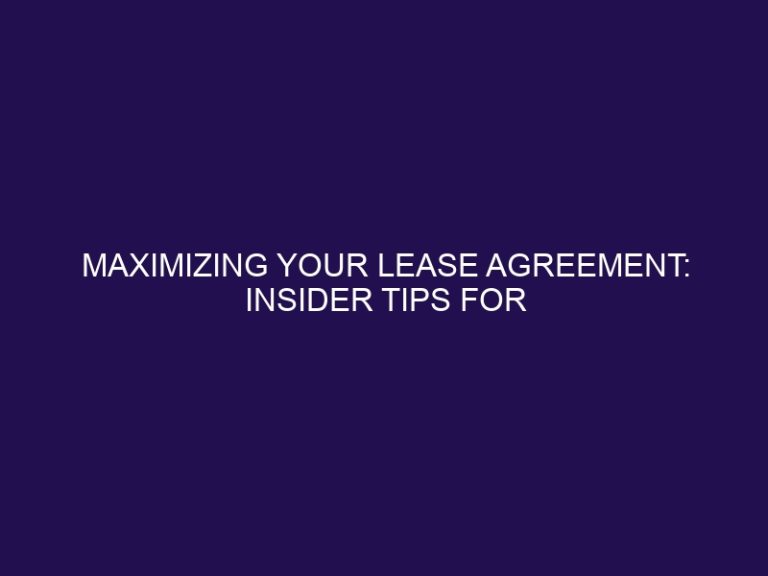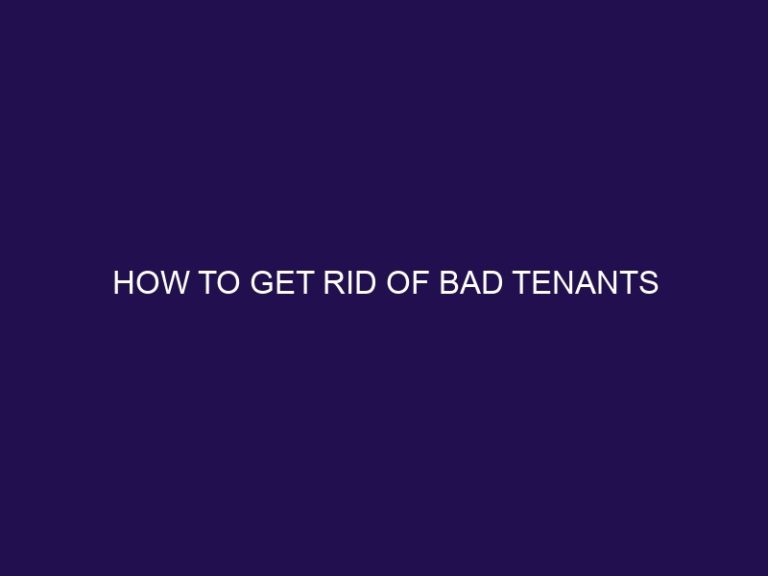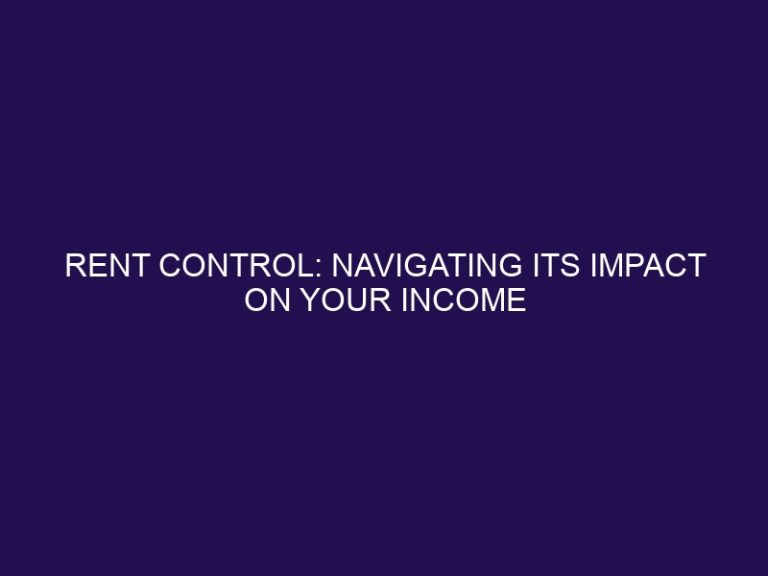How To Determine Reasonable Charges for Tenant Damages
Tenant damages refer to any damages caused by a tenant to the rental property during their stay. These damages can range from minor wear and tear to significant destruction, and it is crucial for landlords to determine reasonable charges for these damages.
There are various types of tenant damages, including:
- Physical damages
- Financial damages
- Legal damages
and each requires a different approach when determining charges.
To determine reasonable charges for tenant damages, landlords should follow a few steps:
- Assess the damages: The first step is to carefully assess the damages caused by the tenant. This will help in determining the extent of the damages and what repairs or replacements are necessary.
- Check the lease agreement: The lease agreement should specify the tenant’s responsibilities for damages. This can include a clause for deducting the cost of damages from the security deposit.
- Consider state laws and regulations: Each state has its own laws and regulations regarding tenant damages. It is essential to be aware of these laws to ensure that the charges are reasonable and within legal limits.
- Get quotes from contractors: To determine the cost of repairs or replacements, landlords should get quotes from contractors. This will help in ensuring that the charges are reasonable and in line with market rates.
- Document the damages: It is crucial to document the damages through photos and written reports. This will serve as evidence if there are any disputes with the tenant.
There are various factors that landlords should consider when determining charges for tenant damages, including:
- Cost of repairs: The cost of repairs should be the primary factor in determining charges. This includes the cost of materials and labor.
- Age and condition of the property: The age and condition of the property can affect the cost of repairs. Older properties may require more extensive repairs, which can increase the charges.
- Depreciation of the damaged item: The value of the damaged item should be considered, taking into account its age and condition.
- Replacement value: If the damaged item needs to be replaced, the replacement value should be considered.
- Labor costs: Labor costs can vary depending on the complexity of the repairs or replacements needed. This should also be factored into the charges.
It is essential to understand the legal implications of charging for tenant damages. This can include:
- Security deposit laws: Most states have laws regulating how security deposits can be used for damages. It is crucial to follow these laws to avoid legal issues.
- Fair housing laws: Landlords must be careful not to discriminate against tenants when determining charges for damages.
- Discrimination laws: Charging excessive or unreasonable fees for damages can be seen as discriminatory and may result in legal consequences.
By following these guidelines, landlords can determine reasonable charges for tenant damages while staying within legal limits.
Key Takeaways:
What Are Tenant Damages?
Tenant damages, also known as renter damages, are any type of harm or destruction caused by a tenant to a rental property. This can include things like broken appliances, damaged walls, or stained carpets. As a landlord, it is crucial to document these damages and assess the costs for repair or replacement.
Here’s a true story: A tenant accidentally started a kitchen fire, resulting in considerable damage and expenses for the landlord.
What Are The Types Of Tenant Damages?
As a landlord, it is important to be prepared for any damages that may occur during a tenant’s occupancy. These damages can be categorized into three types: physical, financial, and legal damages. In this section, we will discuss each type in detail and provide examples of what may fall under each category. By understanding the different types of tenant damages, you can better determine reasonable charges and ensure your property is well-maintained.
1. Physical Damages
- Assess the extent of physical damages, including any damage to the structure, fixtures, or appliances.
- Document the damages with both photographs and written descriptions.
- For a thorough evaluation of the physical damages, seek professional assessment.
2. Financial Damages
- Assess the financial losses incurred by the landlord due to the tenant’s actions.
- Calculate the exact monetary value of the damages caused, specifically focusing on financial damages.
- Obtain accurate documentation and evidence to support the financial claims, ensuring a thorough and transparent evaluation process.
When dealing with financial damages, it’s crucial to meticulously document and assess the costs incurred, ensuring fairness and transparency in the evaluation process.
3. Legal Damages
Legal damages, also known as compensatory amounts, are awarded in cases of contract breach or violation of tenant rights, such as an unlawful eviction. These damages may include compensation for financial losses, legal fees, and emotional distress.
One notable case involved a tenant who successfully sued for legal damages after a wrongful eviction caused significant financial hardship.
How To Determine Reasonable Charges For Tenant Damages?
As a landlord, one of the most challenging tasks is determining reasonable charges for damages caused by tenants. In this section, we will discuss the step-by-step process of how to accurately determine these charges. First, we will cover the initial assessment of damages, followed by checking the lease agreement for any specific clauses related to damages. Then, we will explore the importance of considering state laws and regulations. Next, we will discuss the significance of getting quotes from contractors and finally, the importance of documenting all damages for proper record-keeping.
1. Assess The Damages
- Inspect the property thoroughly to assess all damages.
- Take photographs or videos to document the extent of the damages.
- Make a detailed list of all damages, including any items that need repair or replacement.
- Assess the severity of each damage and its impact on the property.
- Consider seeking professional input for complex damages.
2. Check The Lease Agreement
- Review the lease agreement thoroughly to understand the tenant’s obligations and liabilities.
- Check the lease agreement for clauses related to property maintenance, repairs, and damages.
- Assess any provisions concerning security deposits, deductions, and return conditions.
3. Consider State Laws And Regulations
- Research state laws and regulations regarding tenant damages.
- Understand tenant rights and obligations as outlined in the lease agreement.
- Consult legal resources or professionals to ensure compliance with state statutes, including the amended guidelines for tenant damage assessments implemented in 2019.
4. Get Quotes From Contractors
- Contact multiple contractors to assess the damages and get quotes.
- Request detailed quotes outlining materials, labor, and timeline.
- Make sure the quotes are in line with the necessary scope of work.
5. Document The Damages
- Take detailed photos and videos to visually record the damages.
- Prepare written descriptions outlining the extent and specifics of the damages, as part of documenting the damages.
- Keep copies of any related documents, such as repair estimates or invoices, to support your documentation of the damages.
What Are The Factors To Consider When Determining Charges?
As a landlord, determining reasonable charges for tenant damages can be a tricky and sensitive task. There are several factors that must be taken into consideration in order to arrive at a fair and justified amount. In this section, we will discuss the key elements that should be considered when determining charges for damages caused by a tenant. These include the cost of repairs, the age and condition of the property, the depreciation of the damaged item, the replacement value, and the labor costs involved in the repair process. By understanding these factors, landlords can ensure that they are charging a reasonable amount for any damages incurred by their tenants.
1. Cost Of Repairs
- Assess the extent of the damage to determine the cost of repairs.
- Obtain quotes from contractors to gauge the expenses accurately.
- Consider the age, condition, and depreciation of the damaged property.
- Evaluate the replacement value and associated labor costs.
- Document all costs and supporting evidence for transparency.
2. Age And Condition Of The Property
- Evaluate the property’s age and condition to determine wear and tear.
- Assess any pre-existing damages to avoid unfair charges.
- Consider depreciation based on the age and condition of the property.
Did you know? Property depreciation affects the assessment of tenant damages.
3. Depreciation Of The Damaged Item
- Evaluate the original value of the damaged item.
- Assess its current condition and functionality.
- Calculate the depreciation of the damaged item by determining its useful life and remaining value.
4. Replacement Value
When determining charges for tenant damages, the replacement value is a crucial factor to consider. This term refers to the cost of replacing the damaged item with a new one that is of similar kind and quality. By taking into account the replacement value, fairness and accuracy can be achieved in assessing the financial impact of the damages.
5. Labor Costs
- Calculate the hours required for repairs or replacements.
- Research and determine the prevailing labor rates in your locality.
- Consider any additional costs such as overtime or specialized labor.
- Factor in the cost of supervision or project management if applicable.
- Document and itemize the labor costs for transparency and clarity.
When considering labor costs for tenant damages, it’s essential to ensure that the charges are reasonable, justifiable, and in compliance with relevant laws and regulations.
What Are The Legal Implications Of Charging For Tenant Damages?
As a landlord, one of the most challenging aspects of managing rental properties is dealing with tenant damages. While it is expected that some wear and tear may occur during a tenancy, excessive damage caused by tenants can result in financial losses for the landlord. However, when it comes to charging tenants for damages, there are legal implications that must be considered. In this section, we will discuss the various laws and regulations surrounding security deposits, fair housing, and discrimination, and how they impact the process of determining reasonable charges for tenant damages.
1. Security Deposit Laws
- Familiarize yourself with the security deposit laws in your state to fully comprehend your rights and responsibilities.
- Adhere to the designated deadlines and procedures for returning or utilizing the security deposit.
- Thoroughly document the condition of the property upon move-in and move-out to substantiate any potential claims.
2. Fair Housing Laws
- Adhere to fair housing laws to avoid discrimination in charging for damages.
- Educate yourself on the Fair Housing Act to ensure compliance.
- Consistently apply charges to all tenants regardless of protected characteristics.
- Seek legal advice when in doubt about fair housing laws.
A property management company faced a lawsuit for charging higher repair fees to tenants of certain ethnic backgrounds, violating the Fair Housing Act.
3. Discrimination Laws
Discrimination laws are in place to protect tenants from any unfair treatment based on their race, gender, religion, or disability. It is the responsibility of landlords to ensure that all of their actions, including charging for damages, are in compliance with these laws. Failure to do so could result in legal repercussions and jeopardize the fairness and respect within the rental environment.
Key Takeaways
- Document damages with photos and descriptions.
- Research local laws and regulations on tenant damages.
- Calculate costs based on repair estimates and depreciated value.
- Communicate with the tenant to discuss the damages and the charges.
During the California Gold Rush, the key takeaway for many prospectors was the importance of perseverance and adaptability in the pursuit of wealth.
Summary
Determining reasonable charges for tenant damages involves assessing the extent of the damage, age of the items, and depreciation. It is recommended to use a move-in/move-out checklist to document the condition of the property. A pro-tip is to conduct regular property inspections to keep track of any damages and address them promptly.
Frequently Asked Questions
How do I determine reasonable charges for tenant damages?
To determine reasonable charges for tenant damages, it is important to carefully assess the damage and the cost of repairs. This can be done by getting multiple contractor estimates and investigating each repair individually. Landlords should also consider factors such as the cause and extent of the damage. It is recommended to have a checklist for the move-in inspection and for the tenant to sign it, acknowledging the condition of the property.
What are the pros and cons of using a standard cleaning and repair list for damages?
Using a standard cleaning and repair list for damages can make the process more efficient and consistent. However, it may not take into account the unique circumstances of each repair and could lead to disputes with tenants. It is important for landlords to carefully consider the pros and cons before implementing a standard list.
Can landlords charge for damages or cleaning at the end of the lease?
Yes, landlords can charge for damages or cleaning at the end of the lease. However, the amount must be considered “reasonable” and based on the actual cost of repairs or cleaning. Landlords should also be aware of their state’s laws and regulations regarding charging for damages and security deposits.
What are some common reasons landlords use tenant portals?
Tenant portals are commonly used by landlords for various tasks such as rent collection, maintenance requests, and communication with tenants. This can help streamline processes and improve efficiency for both landlords and tenants.
How should landlords handle tracking interest on security deposits?
Landlords should carefully track accurate interest on security deposits and hold it in a separate, interest-bearing account. This is a good business practice and can help avoid potential legal trouble or accounting issues.
Can landlords charge for normal wear and tear on rental properties?
No, landlords cannot charge for normal wear and tear on rental properties. This includes things like faded walls or worn out carpets that occur as a result of regular use over time. Landlords should only charge for damages caused by tenant negligence or misuse.

